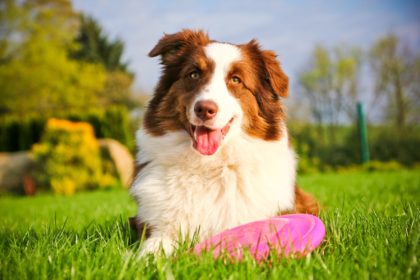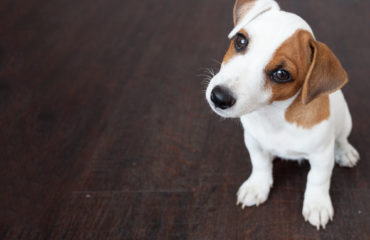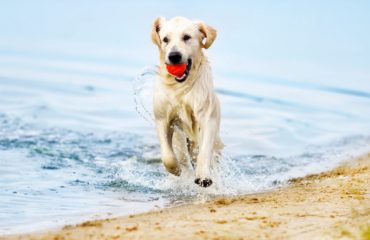Tips for Creating a Dog-Friendly Garden


Having access to a garden is a great way for dogs to stay physically active and mentally stimulated. Being outdoors brings variety to your pup’s day and allows them to burn off any built-up energy. The smells, sounds, and textures outside stimulate their senses too.
However, it’s important to take the necessary precautions to protect your dog from potential dangers lurking in the garden and prevent the pup from damaging the outdoor space too.
To help you create a dog-friendly garden, Benchmark Kennels have put together a guide on the most effective adjustments you can make.
Ensure your dog is comfortable
Tailoring your garden to enhance your dog’s comfort can help them feel calm, which is especially beneficial if your pup is anxious.
- Outdoor dog kennel
An outdoor dog kennel can act as a den for your dog, providing them with a relaxing area when they need some alone time but still want to reside outside. To encourage your pup to use it, equip the kennel with blankets, food, water, and toys.
However, don’t use the kennel as punishment and carefully follow a responsible training plan, so the dog doesn’t feel isolated.
Eliminate harmful gardening elements
Unless designed with a dog in mind, gardens are often rife with toxic elements that can cause accidents.
- Dog-friendly plants
Certain plants are poisonous for dogs and, if ingested, can cause symptoms including vomiting, diarrhoea, weakness, and drooling and would require immediate veterinary attention.
Although consuming too much of any plant can harm pups, here are some low-risk options:
- Sunflowers
- Rosemary
- Camellia
- Fennel
- Roses
- Coral bells
- Snapdragon
- Sage
Also, avoid using chemical gardening products and use natural alternatives instead.
- Lock your shed
If your shed contains chemicals and sharp gardening tools, keep it locked at all times in case your dog wanders inside it.

Protect your pup against theft
Unfortunately, thieves commonly take pups from their own garden, but you can minimise the risk of dog theft by making a few additions to your outdoor space. However, there’s no guarantee that your dog is ever fully protected against theft, so always supervise them when outside.
- Fencing
Fitting a fence that’s at least six feet tall will prevent your dog from jumping over the garden and running away and make it more difficult for thieves to access the garden.
- Gates
Keep any garden gates locked and fit a bell onto the door to scare off any thieves and notify you if anyone opens it.
- Kennel
Place the kennel near the house as fitting it at the bottom of the garden can appeal to thieves. Always keep the kennel locked, too, and consider placing bells on the door, so you’re alerted if it’s opened.
Avoid damage to your garden
Although your dog’s safety is the priority, don’t forget to protect the garden from your dog too.
- Select a designated toilet area
When dogs urinate on a lawn, it causes unsightly brown patches. To prevent this bad habit from developing, follow a toilet training process to encourage them to use a specific spot in the garden that’s out-of-sight. If your dog does urinate on the grass, rinse it down immediately to minimise the damage.
- Create an obstacle course
A bored dog might destroy your garden out of frustration but you can keep them entertained by designing a play area with toys.
You could also create a dog agility training obstacle course to help keep your pup active, teach them tricks and commands, reduce their anxiety, and strengthen your bond. The equipment can include tunnels, tyre jumping, weave poles, and balance beams.
- Pathways
Dogs often enjoy patrolling the garden, so having clearly defining paths can keep your pup from walking right through the flower beds and flattening them over time.
- Dedicated digging spot
Digging is an instinctive canine behaviour that can ease boredom and anxiety, but it can quickly destroy your garden.
Providing your dog with a toxic-free sandbox for digging can deter them from digging up your flower beds and plants.

Precautions for hot weather
During summer, dogs can quickly overheat and develop heatstroke if you don’t implement preventative measures, such as:
- Avoid using artificial grass, as it retains more heat than natural grass, which can burn your pup’s paws.
- Keep plenty of clean, fresh, and cold drinking water in the garden so your dog can rehydrate.
- Install a shallow water feature or set up a doggy paddling pool so your dog can cool down.
- Create shaded areas in the garden with large trees and shrubs.
However, even with these measures, don’t keep your pup outside for too long in the heat, and if they’re exhibiting any signs of heatstroke (e.g., heavy panting, vomiting, weakness, and excess drooling), take them to the vet straight away as it can be fatal if unaddressed.
Implementing these adjustments to your garden will allow you to enjoy spending quality time with your dog outside free of worry.
Need an outdoor kennel to complete your dog-friendly garden?
Outdoor kennels are an excellent way for your dog to enjoy being outside safely and comfortably. At Benchmark Kennels, we offer a range of sheltered, secure and spacious kennels that you can customise to suit your dog’s breed, personality, and size.
For more information on our range of outdoor kennels, contact us via phone or order a wooden or WPC eco-thermal dog kennel directly from our website today.





You must be logged in to post a comment.